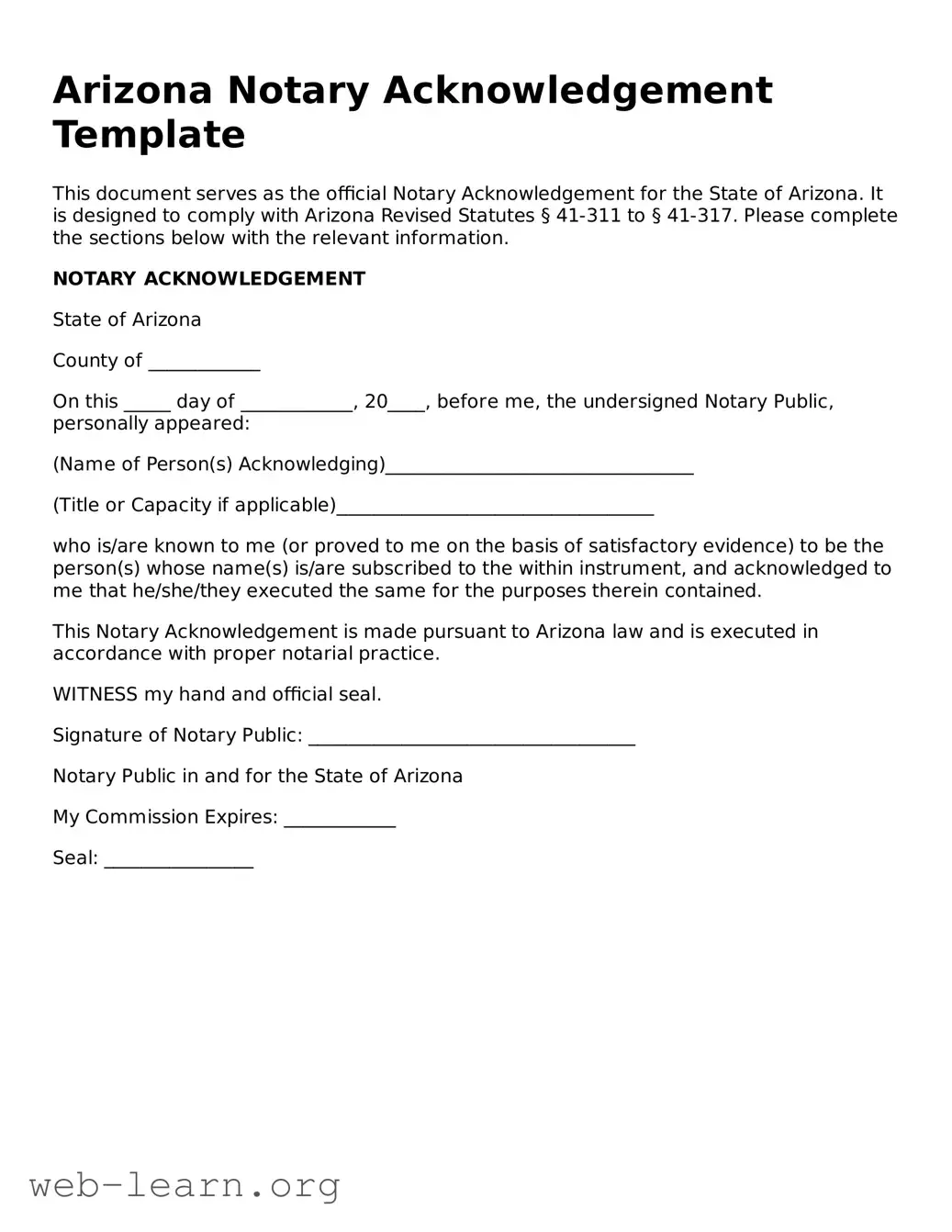Arizona Notary Acknowledgement Template
This document serves as the official Notary Acknowledgement for the State of Arizona. It is designed to comply with Arizona Revised Statutes § 41-311 to § 41-317. Please complete the sections below with the relevant information.
NOTARY ACKNOWLEDGEMENT
State of Arizona
County of ____________
On this _____ day of ____________, 20____, before me, the undersigned Notary Public, personally appeared:
(Name of Person(s) Acknowledging)_________________________________
(Title or Capacity if applicable)__________________________________
who is/are known to me (or proved to me on the basis of satisfactory evidence) to be the person(s) whose name(s) is/are subscribed to the within instrument, and acknowledged to me that he/she/they executed the same for the purposes therein contained.
This Notary Acknowledgement is made pursuant to Arizona law and is executed in accordance with proper notarial practice.
WITNESS my hand and official seal.
Signature of Notary Public: ___________________________________
Notary Public in and for the State of Arizona
My Commission Expires: ____________
Seal: ________________
